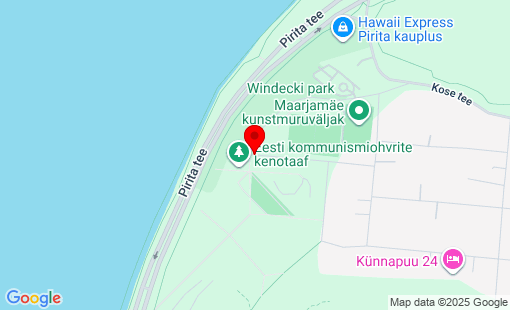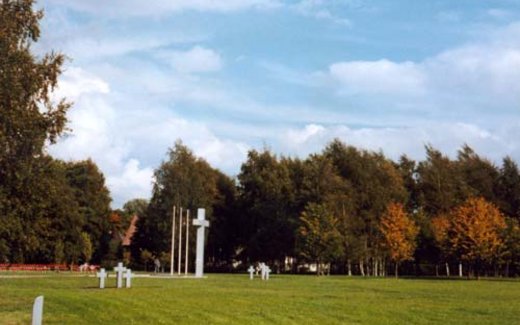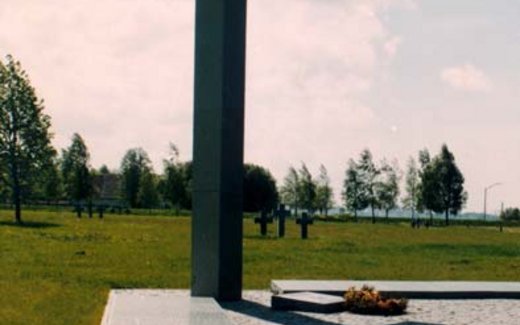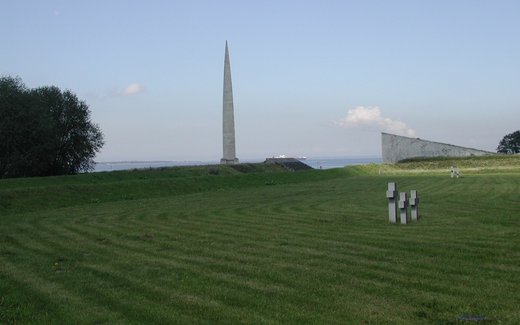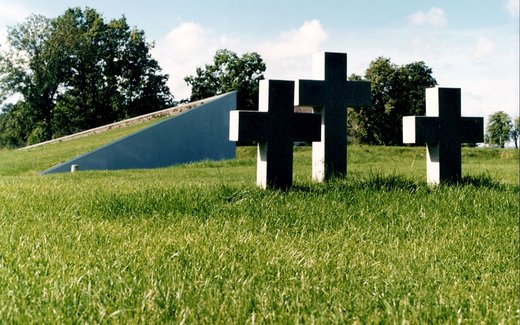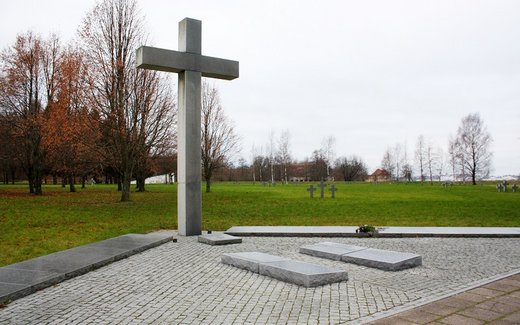At the Tallinn-Maarjamäe war cemetery (German: Reval-Marienberg)
where the dead of the Second World War are buried.
Cemetery description
The war cemetery on the Baltic coast covers an area of around 27,000 square meters
Square meters. The central memorial square in the northern part is characterized by a 5.50
Meter high stone cross. A plaque in front of the cross commemorates
german soldiers resting here. 24 horizontal plaques list the names
Names, birth and death dates of 2,156 buried soldiers in alphabetical order
In alphabetical order. Individual graves of the dead can no longer be reconstructed. 25
Groups of crosses made of natural stone mark the cemeteries. An adjoining
soviet memorial with a monumental memorial (Maarjamäe Memorial,
erected in 1980) protrudes into the German cemetery.
Occupancy
According to documents from the War Graves Commission, around 35,000
german war dead from the Second World War rest in Estonia. These are distributed
originally spread over around 1,700 grave sites. According to estimates by the German Red Cross
Cross, around 10,000 Germans also died in Estonia as prisoners of war
Prisoners of war. The Tallinn-Maarjamäe military cemetery was ordered by the Wehrmacht
as a supplementary cemetery during the Second World War.
History
The Wehrmacht cemetery was leveled after the end of the war. On a small
The Soviet memorial with the memorial was built on a small part of the site.
The war graves agreement between Estonia and Germany, signed on October 12, 1995
1995, came into force on October 26, 1996. in 1997 the Volksbund
German War Graves Commission reached an agreement with the Estonian administration
Estonian administration on the redesign or replanting of the cemetery.
The reburial service investigated the location of the grave blocks.
From 1997 to 1998, the Volksbund then built the new site on behalf of the German
German government. The Estonian government provided the site
made the site available free of charge. The work on the construction of the cemetery
soldiers from the Bundeswehr took part in the construction of the cemetery in 1998 - the first time
baltic states. The cemetery was opened to the public on September 12, 1998
to the public.
On June 8, 2018, 84 war dead were buried as part of a small memorial ceremony
were laid to rest - mostly members of the German navy. They were reburied -
their mortal remains had been recovered on the Estonian coast during the Second World War
The coasts of Estonia during the Second World War.
The Volksbund's initial partner was the State Monument Protection Inspectorate
in Tallinn. In August 2022, responsibility in Estonia was transferred to the
Ministry of Defense, which transferred responsibility to the Estonian War Museum
transferred responsibility.
in 2002, the Volksbund opened the last of 15 newly created German war graves in Toila to the public
War cemeteries to the public.
Special feature
The war cemetery is part of the overall urban development complex in
Maarjamäe. For this reason, it was not demarcated from the surrounding area, but instead
a row of natural stone posts, each ten meters apart
from each other. Trees and areas planted with grass emphasize the
the landscaped character of the cemetery. The grounds - consisting of the
german military cemetery and the Maarjamäe Memorial - is attractive to visitors due to its
historical significance and interesting location make it attractive to visitors from different
Visitors from different nations. There are currently plans to build a large, modern
a large, modern memorial on the site in the coming years, which will also include the
german war cemetery as a place of learning.
